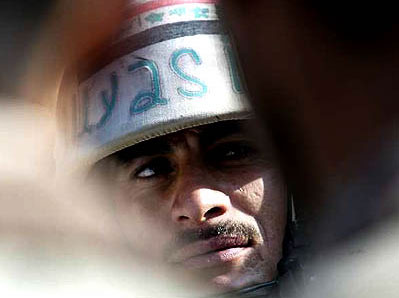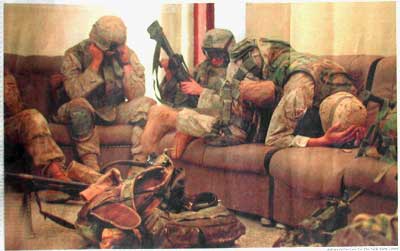Notes
LATimes Fallujah Coverage: A Cup Overwhelmingly Half Full
Following up on my entry yesterday about the L.A. Times Fallujah coverage, I can report to you that the paper’s “Pollyanna” complex continues. In this morning’s edition, LATimes Staff Writer Patrick J. McDonnell gives a repeat performance with another pro-Administration propaganda piece. The subject of this article (“This Time, Iraqis Fought a Good Fight in Fallouja”) involves the participation of Iraqi troops in the battle.
The problem is, despite the optimistic title and wishful assertions about the contribution of Iraqi troops, most of the evidence presented supports the opposite conclusion.
Here are a just a few lines from the article:
Although the three Iraqi battalions fighting here had been battle tested in clashes with insurgents, only one attacked independently, commanders say. The others were directly attached to U.S. units. Even the quasi-independent battalion was guided by U.S. advisors and was part of a larger command reporting to a Marine colonel.
Casualty figures underscore the comparative role of the two forces in Fallouja. U.S. troops suffered almost 10 times as many casualties — 51 killed in action and 425 wounded — as their Iraqi counterparts, authorities said late last week. The fighting left eight Iraqi soldiers dead and 43 wounded.
Among U.S. forces, there was much eye-rolling about some of the Iraqis’ undisciplined habits: eschewing helmets at times, not handling weapons by the book, firing rocket-propelled grenades when smaller arms would suffice. Several of the Iraqis’ injuries were said to have resulted from negligent discharges of their own weapons.
“They don’t seem to know what a safety [setting] is on their AKs,” one Marine said, referring to assault rifles.
Remarked another Marine who fought alongside the Iraqis, “I was afraid the whole time they were going to shoot me.”
Well, you can read the words and get the sense that they’re not consistent with each other. Or, you can just compare the headline with the picture.

Here is where you can really see how fragmentary and undefined the Iraqi fighters appear; how scared or dubious they look; how separated we are from them by language and custom; how imposing we appear to them; and how difficult it is to tell what they’re really thinking.
(photo: LATimes — Luis Sinco )


Reactions
Comments Powered by Disqus